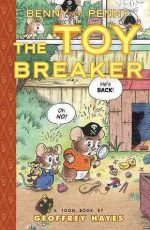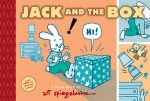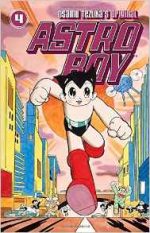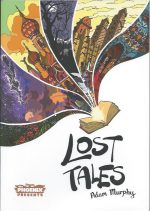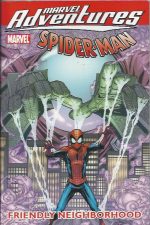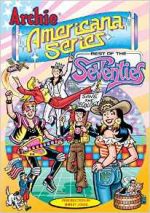
By Frank Doyle, George Gladir, Dan DeCarlo, Samm Schwartz, Harry Lucey, Stan Goldberg & various (Archie Comics)
ISBN 978-1-87979-405-4
The monolith of wholesome fun that is Archie Comics had fully cemented its place in America’s popular culture scene by the 1960s. With the Youth Market an acknowledged commercial powerhouse, the red-haired archetype (and the company which created him) was known as much for animated TV shows, the pop single “Sugar, Sugar†and soon a chain of restaurants. Archie also totally dominated the comicbook humour market.
This volume – now also available as a digital download – collects a scant few of the stories from that decade; concentrating on fashions and fads such as Hot Pants, CB radio, Protest Movements, the Bicentennial, Disco, the advent of video games and even popular movie and TV sensations as well as the ever-widening divide between rebellious teens and oppressive adults.
It also delightfully shows the overwhelming power of good writing and brilliant art to captivate an audience of any age. Padding out this potently nostalgic package is a brace of House-ads from the period and a fulsome cover-gallery of iconic power and riotous wit.
The eternal verities are still in effect. Jughead Jones is still wise, weird and eternally hungry. The teachers at Riverdale High School are still hard-pressed and harassed. Archie Andrews is, as ever, that good-hearted, well-meaning boy lacking common sense. Betty Cooper is still the pretty, sensible girl next door, and glamorous Veronica Lodge is as rich, exotic and quixotic as ever, whilst the school and leisure antics of the broader cast are hip, engaging and hugely entertaining.
The eternal triangle and perfect laugh formula was first seen in 1941 and forms the basis of decades of charming, raucous, gentle, frenetic, chiding and even heart-rending comedy ranging from surreal wit to frantic slapstick, and has never been better depicted than here.
Following a poetic Introduction from actress Shirley Jones, the merriment kicks off with
‘Protest’ (Life with Archie #93, January 1970) by Frank Doyle & Samm Schwartz, seeing an ever-more frantic Archie desperate to join the national wave of teen rebellion but unable to find anything to dissent over or anyone angry enough to march with him…
George Gladir, Dan DeCarlo & Rudy Lapick regale us with Riverdale’s response to daring new fashion must-have ‘Hot Pants’ in a wry observation from Laugh #248 (November 1971) after which ‘Decisions, Decision’ (Archie #214, December 1971, by Doyle, Harry Lucey & Marty Epp) deliciously reveals how that Archie-Betty-Veronica quandary keeps going…
The anonymously crafted ‘Bubble Trouble’ (Everything’s Archie #21, April 1972, possibly Stan Goldberg pencilling?) then reveals how the garage band The Archies disprove media accusations that they are merely a bubblegum rock band with the help of a certain legendary star of Rock ‘n’ Roll…
From Archie #217 (April 1972) by Doyle, Lucey & Epp comes ‘The Late Archie Andrews!’ as desperate Principal Mr. Weatherbee goes to outrageous lengths to get the unlucky red-head to school on time, before a quartet of cool covers bridge the gap until the wackiness resumes.
‘Patch Match’ (Betty & Veronica #198, June 1972, Gladir & DeCarlo) details how Betty monopolises that Andrews boy by offering to sew onto his jacket all the cool badges he’s been collecting. Veronica of course responds with all the wealth in her arsenal but still comes out second-best…
‘Loyalville, USA’ (Archie at Riverdale High #12 December 1973, Doyle, DeCarlo & Lapick) sees Betty and Archie help out the town’s worst memorabilia vendor whilst Gladir, Goldberg & Jon D’Agostino prove there’s ‘No Fuel Like an Old Fuel’ (Pep #296, December 1974) by finding a way to save gas during an energy crisis that nevertheless lands Archie and Jughead in a storm of trouble…
Probably the most affecting tale in this collection, ‘You Came a Long Way, Baby’ (Betty & Veronica #233, May 1975, by Doyle, DeCarlo & Lapick) dramatically teaches the condescending girls how much progress in gender equality old maid Miss Grundy has been responsible for at Riverdale High. Then sadly uncredited ‘Bicentennial Banter’ (Archie’s TV Laughout #36 December 1975) sees those same lasses girls teach the boys about the female contributions and the decisive roles played by women during the American Revolution as they rehearse for a commemorative school play…
Archie’s eager fondness for CB radio is detailed in ‘Over and Out’ (Archie #256, September 1976: Doyle, Dan DeCarlo & Lapick) before more covers whet the palate for further fun which comes through an animal-free ‘Pet Parade’ (Everything’s Archie #57, June 1977).
Our gormless star naturally becomes ‘A Fool for Cool’ (Archie Giant Series/World of Archie #461 September 1977) after listening to bad advice and patterning his dating techniques on the Fonz from TV phenomenon Happy Days…
Betty & Veronica #263 (November 1977) was the original home for Gladir & DeCarlo’s ‘Video Vexation’, with the girls losing their place as the boys’ abiding passion once Pop Tate installs a computer arcade system, after which Star Wars gets thoroughly spoofed in ‘Costume Caper’ (Reggie & Me #104, April 1978) with Lapick adding his inking sheen to Gladir & DeCarlo’s smart rib-tickler.
‘Melvin’s Angels’ (Betty & Veronica #277, January 1979) by Doyle, DeCarlo & Lapick then sees Betty & Veronica undertaking a bruising mission for a mystery man on a speaker phone before the glitzy glamour-era comics celebration concludes with ‘Disco Dude’ (Laugh #343 October 1979) as a big food prize entices slovenly slowpoke Jughead to show off his amazing dance moves. Of course, his cunning plan goes disastrously awry…
These charming and comfortable yarns are a gentle delight and a much neglected area of cartoon and graphic narrative. It would benefit us all to take another long look at what they have to offer. If only to see how far fashion has not come…
© 1970-1979, 1998 Archie Publications Inc. All rights reserved.

